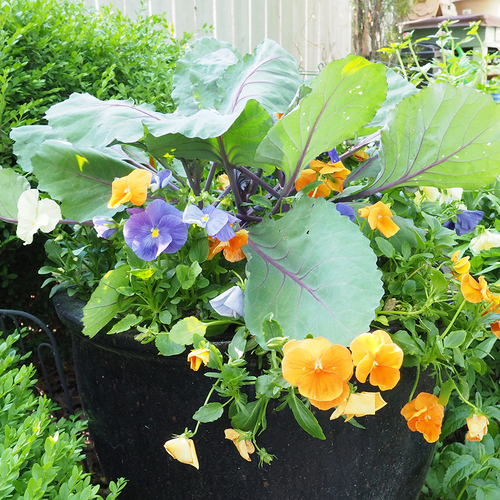Spring is that time of year when the air smells like things want to grow. But then a chilly wind shows up with a snow flurry and reminds you it’s not time for planting. For much of the Midwest, late winter and early spring were an unpredictable mess. A roller coaster of temperatures, record-shattering winds, power outages, and rain that was either torrential or gone in a flash. This resulted in winter greens often staying in pots far longer than normal (or appreciated).
But what does one plant in containers for seasonal color when the temperature is cool at night and warm during the day? April and May weather swings from one extreme to another, requiring plants to be tolerant of temperature drops, and able to be moved to a protected location or covered when necessary. With soils being cooler, growth will be slow, which also warrants starting with larger plants as well as considering artificial and dried materials to enhance the overall design.
Perk up your pansies with architectural stem cuttings
Pansies (Viola × wittrockiana, annual) are a common cold-hardy annual for spring and fall bedding and use in containers. While charming alone, they are even more delightful when paired with another plant element. Pussy willow (Salix discolor, Zones 4–9) stems can be used organically or gathered in a formal shape, creating a more sculptural appearance. Preferring a moist soil, you may find these growing wild where you can take some cuttings. If you have these in your garden, annual renovation pruning will yield an ample supply of branches for use in pots or forcing indoors. They are also typically available for purchase from your local florist or garden center. Yellow twig dogwood (Cornus sericea ‘Flaviramea’, Zones 3–8) is another shrub whose cut stems are splendid accents to pansies and other annuals in spring containers.

Pick plants that can transition into summer
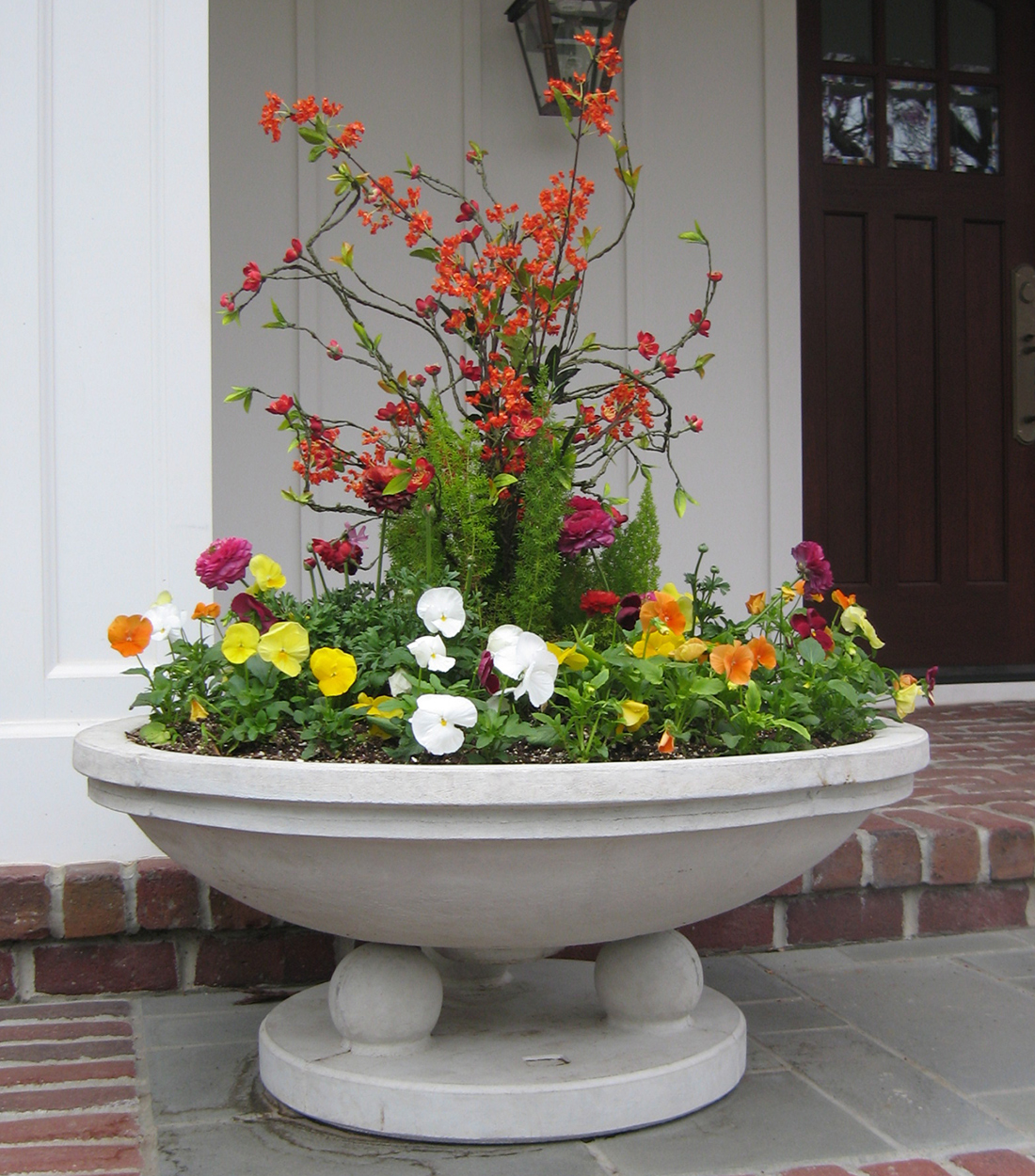
If you’re desperate for some more flowers and fresh foliage this time of year, mix pansies with ranunculus (Ranunculus asiaticus, annual), and foxtail fern (Asparagus densiflorus, annual) for a cottage garden–inspired spring display. For more height, artificial stems of flowering quince are added in the center, arranged in an irregular fashion to replicate their natural character. While all of these tolerate the cooler weather of spring, the foxtail fern and ranunculus are useful in summer displays as well. Be warned, the fern is toxic if eaten, so keep it away from curious children and pets that are inclined to chew on anything.
When flowers falter, foliage packs a punch
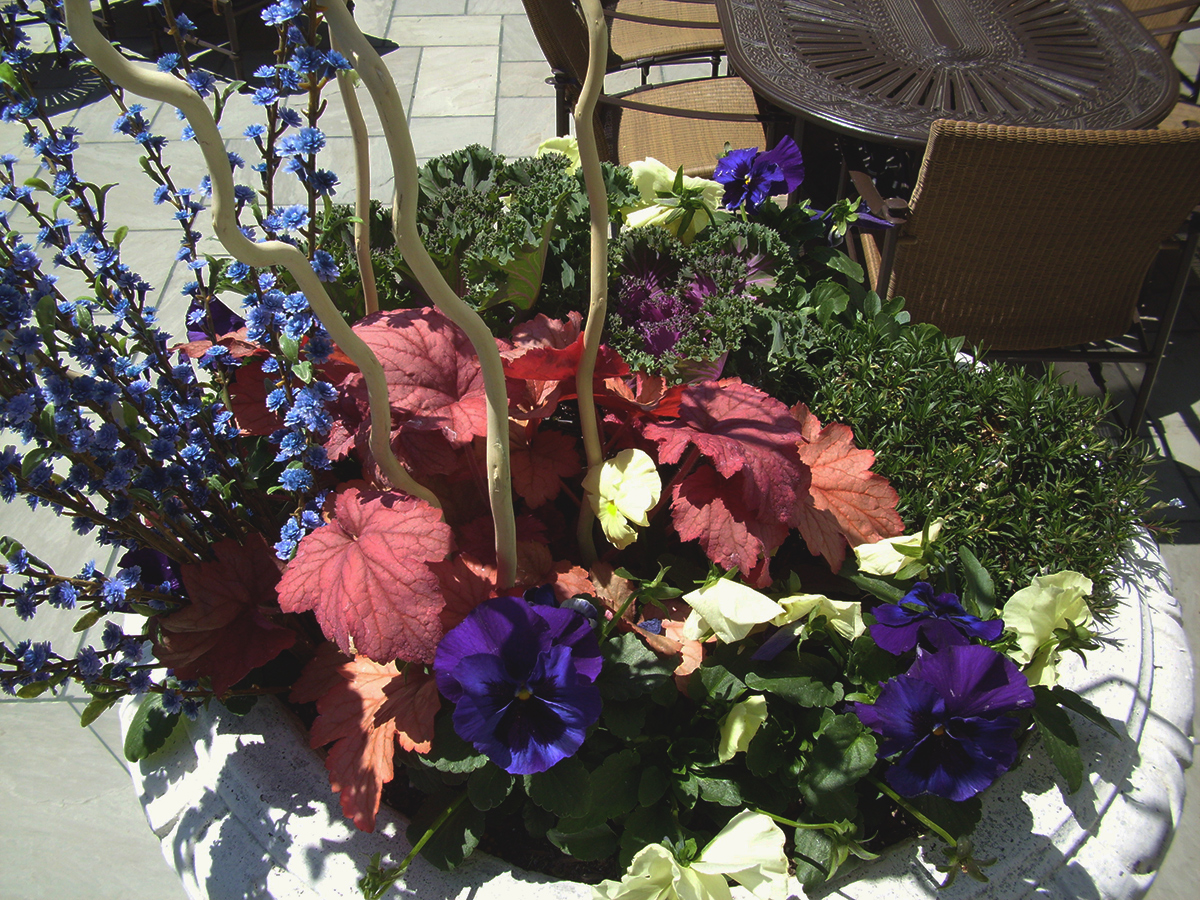
Bold and colorful foliage can make a significant difference in the success of your spring display when flowers are young and still small. Coral bells (Heuchera sanguinea, H. americana, H. micrantha, H. villosa, and H. cylindrica, Zones 4–9) are an herbaceous perennial known for the wide variety of sizes, shapes, and colors of its foliage. To get the most out of these foliage superstars, visit your local nursery early and get the best selection of cultivars to add to your garden. First plant them into your spring containers, and then transplant them into your landscape later. Mix with some fine textures such as creeping phlox (Phlox subulata, Zones 3–9) or cheddar pink (Dianthus gratianopolitanus, Zones 4–8). Both are mat-forming perennials that prefer well-drained soils and will cascade over the edge of the container. They can remain during the summer when the plants are changed over, or moved into the landscape where they will continue to grow for another season. Ornamental kale (Brassica oleracea, annual) is another foliage plant that works well as a bold accent, but consider using an edible, such as leaf lettuce, and enjoy a harvest as well.
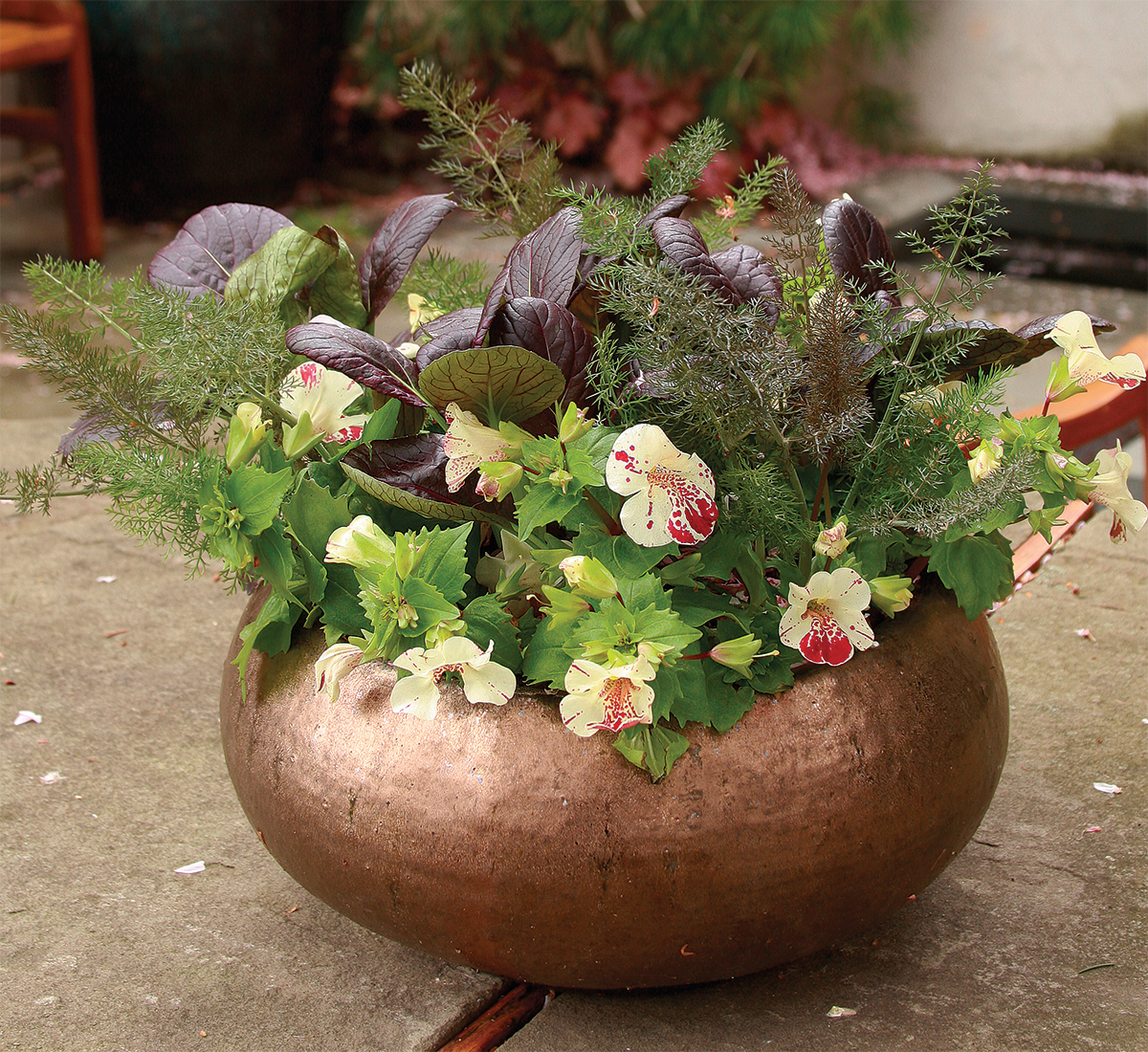
The challenge of creating spring containers is their short duration, but we all need a splash of spring in just the right spot. Bigger is better when selecting plants for spring, as plant growth during this season is usually slow and subtle. I rely heavily on cut branches and accenting with artificial flowering stems for impact until the smaller plants have time to settle in and start growing. I also encourage you to dedicate a few containers to four-season planting, incorporating plants with year-round appeal. Learn more about this technique here: 10 Plants for Year-Round Containers.
Find more ideas and inspiration for spring containers:
Discuss this article or ask gardening questions with a regional gardening expert on the Gardening Answers forum.
And for more Midwest regional reports, click here.
Marti Neely, FAPLD, owns and operates Marti Neely Design and Associates in Omaha, Nebraska.
Fine Gardening Recommended Products
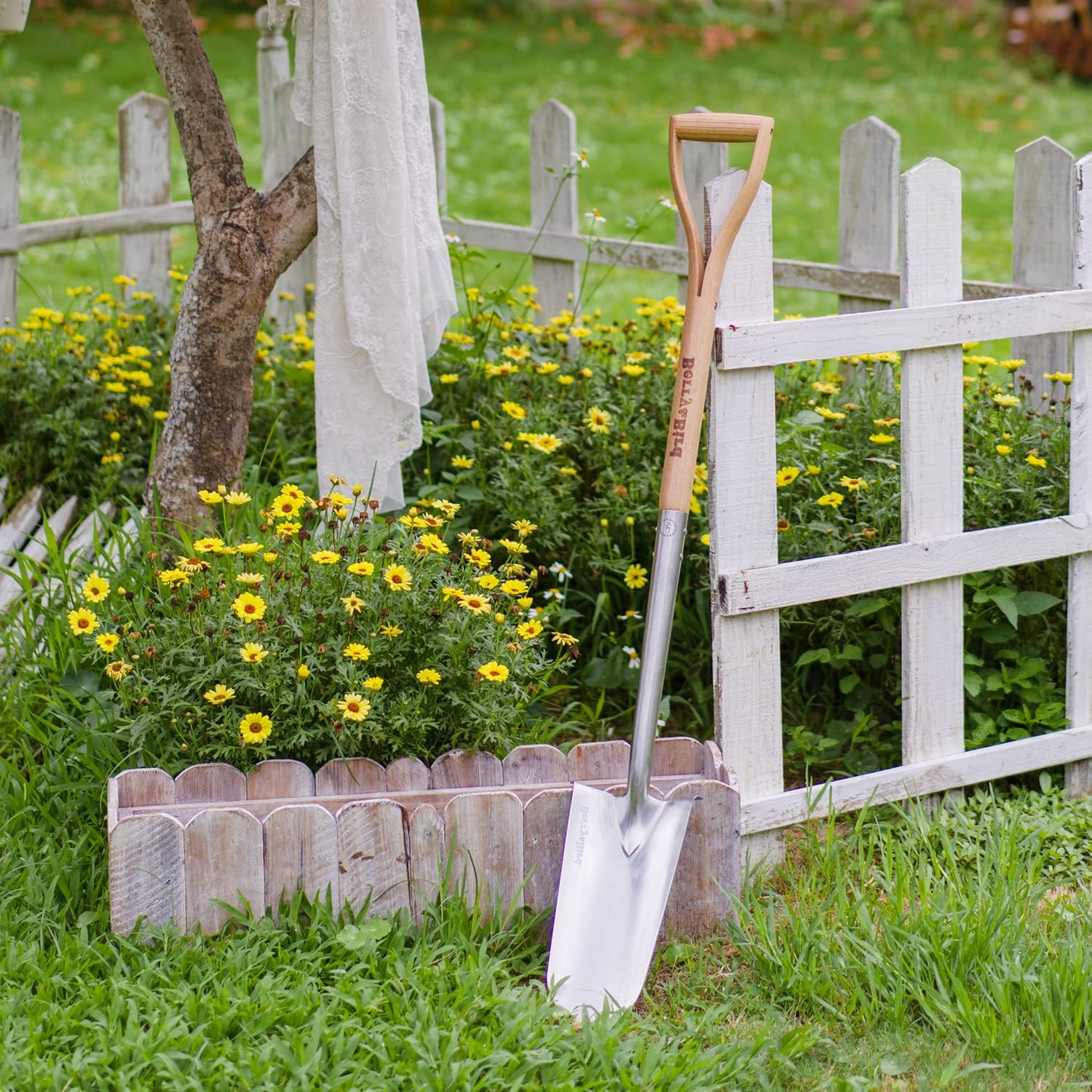
Berry & Bird Rabbiting Spade, Trenching Shovel
Fine Gardening receives a commission for items purchased through links on this site, including Amazon Associates and other affiliate advertising programs.
Ideal Tool for All Gardeners Use: Our heavy duty trenching shovel is designed by a professional gardening tool designer. Lifetime Durability: This heavy duty drain spade is made of high-quality stainless steel, it is very strong and durable, even if it is used for high-strength work, it will not bend. Ergonomic Wood Handle: The handle of this planting spade is made of ash hardwood harvested from FSC-certified forests and has an ergonomically streamlined design, making it very suitable for everyone’s hands. Multi-Use: This digging shovel is generally used for digging trenches, digging holes, transplanting, edging, moving compost, cutting thick turf and furrowing. The sharp blade allows you to cut, scoop, dig, lift and dice in hard soil.
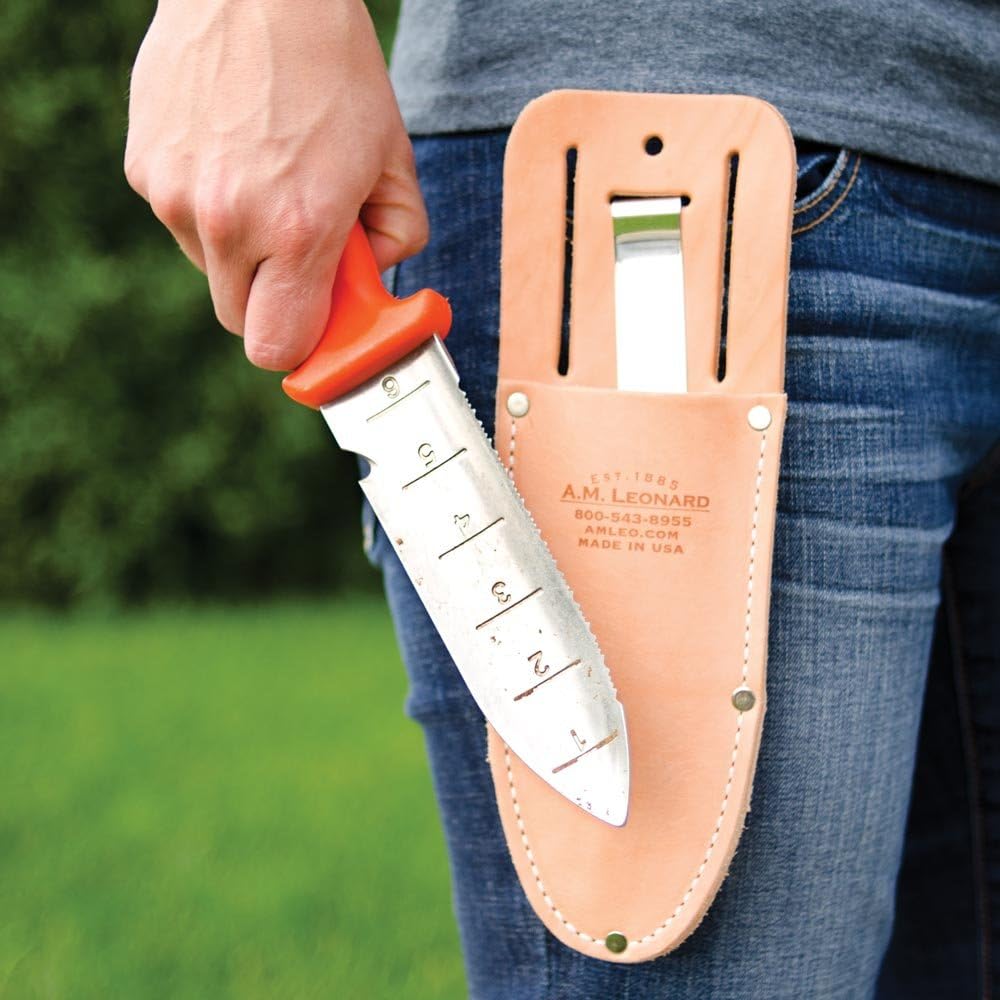
A.M. Leonard Deluxe Soil Knife & Leather Sheath Combo
Fine Gardening receives a commission for items purchased through links on this site, including Amazon Associates and other affiliate advertising programs.
MULTITASKING DUAL EDGES: a deep serrated edge and a tapered slicing edge ideal for tough or delicate cuts. DURABLE 6-inch stainless steel blade withstands 300 lbs of pressure. TWINE CUTTING NOTCH, DEPTH GAUGE MARKINGS & spear point – no need to switch tools when using this garden knife. LEATHER SHEATH: heavy duty, protective, clip on sheath to keep your knife convenient and secure. LIFETIME WARRANTY.
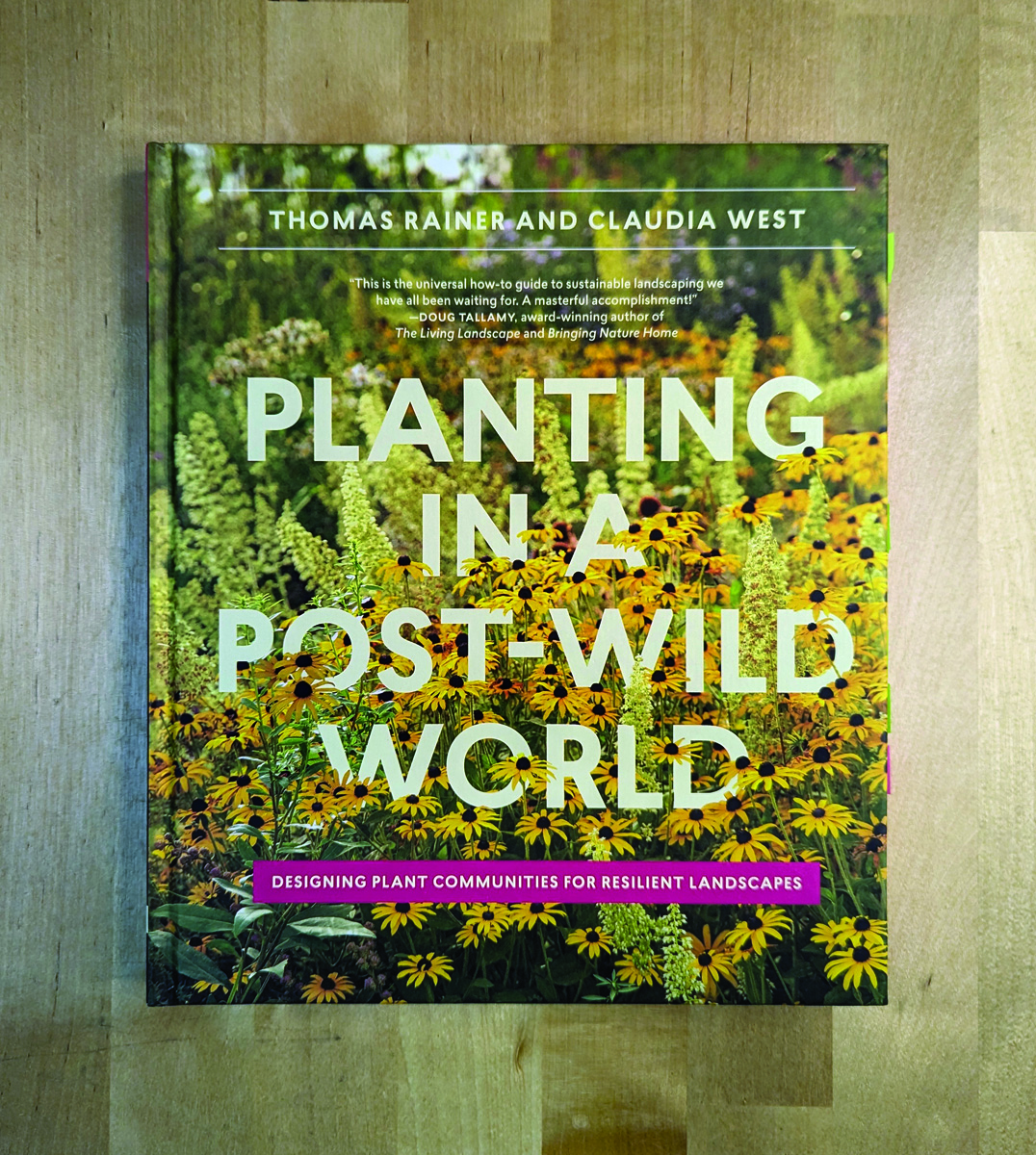
Planting in a Post-Wild World: Designing Plant Communities for Resilient Landscapes
Fine Gardening receives a commission for items purchased through links on this site, including Amazon Associates and other affiliate advertising programs.
Featuring gorgeous photography and advice for landscapers, Planting in a Post-Wild World by Thomas Rainer and Claudia West is dedicated to the idea of a new nature—a hybrid of both the wild and the cultivated—that can nourish in our cities and suburbs.

